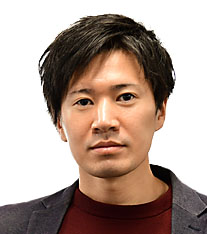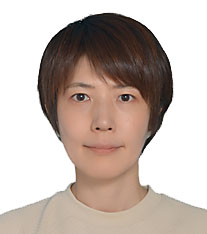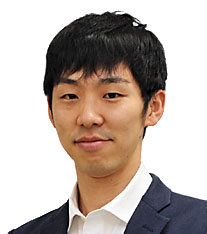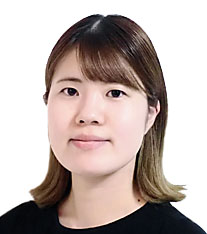- JST Home
- /
- Strategic Basic Research Programs
- /
 PRESTO
PRESTO- /
- project/
- Exploration of the Blue Biosphere-Climate System Towards Carbon Cycle Management/
- [Blue Biosphere] Year Started : 2023
[Blue Biosphere] Year Started : 2023
Takeshi Ikeda
Prevention of ocean acidification-induced disturbance of the marine silicon cycle
Grant No.:JPMJPR23G1
Researcher
Takeshi Ikeda

Associate Professor
Graduate School of Integrated Sciences for Life
Hiroshima University
Outline
Ocean acidification caused by increasing carbon dioxide emissions can disturb the marine silicon cycle, which, in turn, can affect the global carbon cycle. It has been speculated that more microorganisms are involved in the biogeochemical silicon cycle than previously thought. In this research project, I intend to revisit the marine silicon cycle while considering previously unrecognized microorganisms, to understand the effects of ocean acidification on the global silicon and carbon cycles and to sustain the healthy silicon cycle.
Shinya Iwasaki
History of deep seawater carbon storage in the Pacific Southern Ocean
Grant No.:JPMJPR23G2
Researcher
Shinya Iwasaki

Assistant Professor
Graduate School of Environmental Science
Hokkaido University
Outline
Deep ocean carbon reservoir plays a vital role in the global carbon cycle, contributing to dynamic change in atmospheric carbon dioxide concentration during the glacial and interglacial periods. However, little quantitative evidence exists of carbon storage in the deep ocean during the glacial period. Here, I apply a newly developed method to assess foraminiferal test dissolution as a proxy for paleo-carbonate ion concentrations. Utilizing the new proxy, I evaluate the variation in the deep seawater carbon storage in the Southern Pacific, which contributes to understanding the process of carbon sequestration in the deep ocean since the last interglacial period.
Hisashi Endo
A novel dynamics analysis of marine plankton based on genetic information in the dissolved fraction of seawater
Grant No.:JPMJPR23G3
Researcher
Hisashi Endo

Associate Professor
Institute for Chemical Research
Kyoto University
Outline
Phytoplankton and other microscopic organisms are the main players in the biogeochemical cycles in the ocean. To understand the future of marine ecosystems, it is essential to understand the responses of eukaryotic microorganisms, which are estimated to number more than 100,000 species, to environmental change. This project aims to establish an environmental impact assessment method that simultaneously measures the growth and mortality of all planktonic species using comprehensive and quantitative analysis of cell-free RNA in dissolved fractions of seawater, and to elucidate the response of marine ecosystems under climate change.
Hidetaka Kobayashi
Elucidating the mechanisms of transient changes in the millennial-scale ocean carbon cycle
Grant No.:JPMJPR23G4
Researcher
Hidetaka Kobayashi

Assistant Professor (Project)
Faculty of Science
University of Toyama
Outline
This study conducts numerical experiments using a model of the ocean carbon cycle to investigate the mechanisms of changes in ocean carbon storage over millennial timescales, focusing on continental weathering, sea level change and seafloor sedimentation processes, from past glacial-interglacial cycles to thousands of years into the future.
Yoshiko Kondo
Role and importance of vitamin B12 in controlling marine primary production
Grant No.:JPMJPR23G5
Researcher
Yoshiko Kondo

Associate professor
Graduate School of Integrated Science and Technology
Nagasaki University
Outline
This project will investigate the dynamics of vitamin B12 in both coastal and open ocean areas and verify the state of vitamin B12 limitation in the natural phytoplankton communities through onboard incubation experiments. In the field observation, this project will not only investigate vitamin B12, but also trace metal elements such as iron, which are necessary for phytoplankton growth, and the composition of biological communities. This project will comprehensively analyze the results and elucidate the role and importance of vitamin B12 in the material cycles in the ocean.
Tatsuya Sakamoto
Understanding the impact of global warming on sardine and anchovy ecologies based on fossil isotope analyses
Grant No.:JPMJPR23G6
Researcher
Tatsuya Sakamoto

Assistant professor
The Hakubi Center
Kyoto University
Outline
How will global warming change the ecology of sardines, which form the basis of marine ecosystems? In this study, I approach this question by analysing the stable isotope ratios of fossil fish otoliths, bivalves and foraminifera from terrestrial strata recently discovered in Kanagawa Prefecture (Paleo-Tokyo Bay). The growth and migration history of sardine and anchovy at that time and the marine environmental conditions will be reconstructed, which will make it possible to clarify the effects of global warming on their distribution and abundance.
Shintaro Takao
Development of high spatiotemporal observation system of photosynthetic activity for the assessment of climate change impacts
Grant No.:JPMJPR23G7
Researcher
Shintaro Takao

Senior Research Scientist
Earth System Division
National Institute for Environmental Studies
Outline
There is deeply concern about the effects of extreme ocean events, such as marine heatwaves, that have become more frequent in recent years on planktonic ecosystems and the air-sea exchange of carbon dioxide (CO2). In this project, I will develop a high spatiotemporal observation system to elucidate interactions among extreme ocean events, the partial pressure of CO2 in surface water, and physiological characteristics of phytoplankton, and to evaluate their impacts on the ocean carbon cycle creating the world’s first dataset that simultaneously captures seasonal variations in the partial pressure of CO2 and photosynthetic activity of phytoplankton in the North Pacific Ocean.
Shotaro Takano
Quantitative understanding of trace metal cycling in the ocean based on multi-elemental analysis
Grant No.:JPMJPR23G8
Researcher
Shotaro Takano

Associate Professor
Institute for Chemical Research
Kyoto University
Outline
Trace metals in seawater are essential nutrients or toxins for phytoplankton, so the cycle of trace metals and carbon in the ocean is closely interrelated. This study aims to quantitatively understand the processes of supply, transport, and removal of dissolved and particulate trace metals in the ocean by analyzing concentrations and isotope ratios of multi-elements in atmospheric aerosols, phytoplankton, seawater, suspended particles in seawater, and sediment.
Masumi Hasegawa-Takano
Role of bacteria in the carbon storage process in the mangrove forest
Grant No.:JPMJPR23G9
Researcher
Masumi Hasegawa-Takano

Postdoctoral Researcher
Advanced Institute for Marine Ecosystem Change
Japan Agency for Marine-Earth Science and Technology
Outline
The mangrove forest storages significant amounts of carbon and thus attracts considerable attention as a blue carbon ecosystem. In this study, I investigate the bacterial community composition and physiological functions of bacteria in the mangrove forest that support its high carbon sequestration capacity, through both metagenomic analyses and culture experiments. These results contribute to the assessment and prediction of potential impacts of environmental fluctuations on mangrove ecosystems.
Takako Masuda
Reassessing marine biological productivity using single cell analysis
Grant No.:JPMJPR23GA
Researcher
Takako Masuda

Senior Researcher
Fisheries Resources Institute
Japan Fisheries Research and Education Agency
Outline
I aim to visualize and quantify CN uptake activity by phytoplankton on a cell-by-cell basis using stable isotopes (13C15N) combined with secondary ion mass spectrometry (NanoSIMS). The obtained results will be compared with the bulk results. I will try to visualize 13C utilization in the organic state for picoplankton. Finally, I will apply the above results to a model to estimate primary production in the offshore waters of the Tohoku region.













